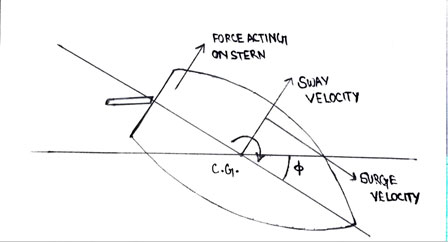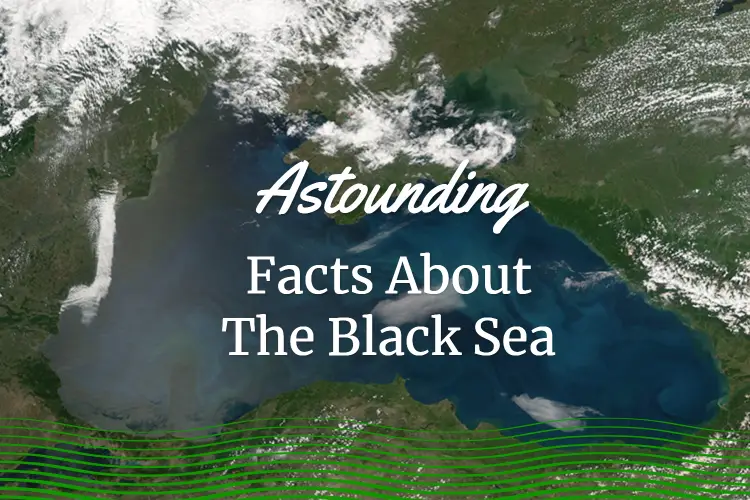How Does A Rudder Help In Turning A Ship?

First of all, we should know what is rudder. The device that is used for governing, directing, or guiding an object moving through a fluid medium is known as a rudder.
In ships, a rudder is a blade-type structure that is positioned at the stern behind the propeller. The steering wheel or helm controls the motion of the rudder. When the helm is rotated in a particular direction, the ship turns in that direction.
We all have seen people rowing small boats using oars. Earlier, when the rudder was not invented, to row the big boats many people were needed. They rowed the boat for hours and for long a journey more people were needed in order to replace the workers who got tired. It was very difficult to change the direction of the boats. It was time consuming and hardworking process.
With the advancement of technology, the concept of steering oar was introduced. The steering oar was fastened to the vessel’s side near the stern. This was further improved by increasing the width of the blade and attaching a tiller to the upper part of the handle. The person that handles the steering is known as the helmsman. Nowadays, various types of rudders that are used are balanced rudders, semi-balanced rudders, unbalanced rudders, flaps rudders, and pleuger rudders.

Also read: Straddle Carriers
How Rudders Work
The rudder works by deflecting water flow. In order to move the rudder, the helm has to create a torque on it and it depends on the size and shape of the rudder, and also on the speed of the vessel. The rudder arrangement is exposed to the forces like current forces created by propeller and waves, the gravity of the components, and ship movement and side forces when turning.
Before understanding how ship turns we should know some maritime terms:
- Bow: The front of the ship is known as the bow.
- Stern: The rear of the ship is called the stern.
- Starboard: The right-hand side of the ship, when looking towards the bow.
- Port: The left-hand side of the ship is known as the port.
Suppose a normal rudder is attached to the hull. If we keep the rudder at zero-degree angles from the flow of current, the water flows evenly as in diagram I. In this case, no turning force is generated and the ship moves in the straight line.

But we turn the rudder such that it makes some angle with the original current flow as shown in the diagram II, then the water flow is directed in a different direction away from the boat. Because of the extra water on the side in which rudder is turned, high pressure is generated on that side. The rudder moment acts on the center of gravity of the boat. This induces a force on the stern towards the low pressure side and the boat is turned about its center of gravity. The boat always turns in the direction of the rudder moment.

The magnitude of the rudder moment which acts on the ship is very small. It just gives a small change in the position of the ship. Drift angle, if generated, because of the rudder moment which provides surge velocity and sway velocity to the ship which are the component of the ship’s velocity (in the forward direction).

The effectiveness of the rudder increases with the increase in the speed of the water.
While the ship is sailing many other forces act on it. Ship handling and maneuvering is the art of proper control of the ship. Good handling is necessary for having a safe journey. The forces that should be under direct control during ship handling are the ship’s main engine, propeller, thrusters, rudders, anchors, and ship’s mooring. Professional ship handlers should familiarize themselves with the performance and limitations of various ship systems used during maneuvering.
Also read: Capsizing and Reasons for Capsizing
Types Of Rudders And Their Advantages
There are many kinds of rudders used in different ships. The turning of the ship is largely dependent on the size of the rudder. The required area of the rudder changes with different types of ships. The force on the rudder depends on its area, its form, speed of the ship, and angle of the helm. The approximate size of the rudder needed is decided by professionals.
1) Balanced rudder
A balanced rudder is a rudder in which the axis of rotation of the rudder id behind its front edge. It is applied in vessels with long sharp stems. This is the most used rudder type on ferries and smaller boats. This type of rudder gives very hard maneuverability, depending on the available rudder angle and the rudder profile.
2) Semi-balanced rudder
A rudder with a small part of its area forward of the turning axis is known as semi balance. It is applied when a large rudder is required and the vessel has a small steering gear.
3) Unbalanced rudder
This rudder is hung on pintles on a vertical stem post and is therefore hinged at its forward end. It is applied when a vessel is unfit for a balanced rudder. It is meant for small ships of deep draft.
4) Flaps rudder
A flap rudder produces more side force than balanced, unbalanced, and semi-balanced rudders. The leading edge of the rudder can be twisted for improving its efficiency of the rudder. This type of rudder is used when very good maneuverability is required. The rear fin “exaggerates” the movement of the rudder, making the rudder more effective.
5) Pleuger rudder
A pleuger rudder is a power-assisted ship’s rudder. It creates a flow of water in the direction of rudder points powered by an auxiliary electric motor which aids maneuverability at a low speed greatly as it operates on a similar principle to a thruster (an engine that develops thrust by expelling a jet of fluid or a stream of particles).
The rudders are placed behind the ship for stability. It is an unstable system with the rudder at the front of the center of gravity is behind the rudder. As we have earlier read that the effectiveness of the rudder depends on the speed of the water, the rudder is always positioned behind the propeller because the fast-flowing water over the rudder gives more control over the boat.
So even if the boat is at rest the water is still moving on the rudder which helps in steering the boat. This is how a rudder helps in the turning of the ship. Although hydrodynamic inertia also has a role in the ship’s turning but not as much as a rudder.
Hydrodynamic inertia acts very close to the center of gravity of the ship. But the rudder is placed at the stern, far away from the center of gravity of the ship. Therefore, it has more impact than hydrodynamic inertia.






